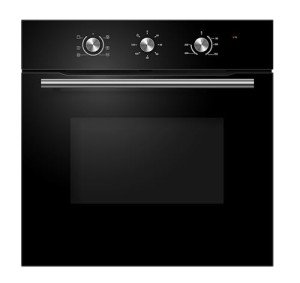The Comprehensive Guide to Built-In Ovens: A Modern Kitchen Essential
Built-in ovens have become a staple in contemporary kitchen areas, combining looks, performance, and space effectiveness into a single appliance. As house owners pursue both usefulness and style, comprehending the features, advantages, and considerations of built-in ovens can significantly improve the cooking experience. This post digs into what built-in ovens are, their diverse types, installation considerations, and FAQs to assist customers make informed decisions.
What is a Built-In Oven?
A built-in oven is a kitchen appliance designed to be integrated into cabinets, creating a streamlined, cohesive try to find the kitchen. Unlike freestanding ovens, which occupy additional flooring area, built-in ovens are enclosed within wall units or cabinets. They are available in various configurations and sizes, permitting customized solutions that accommodate the needs of varied families.
Types of Built-In Ovens
Built-in ovens can be categorized into different types based on their functions and cooking approaches. Here are a few of the most common types:
Single Built-In Ovens
- Best for small kitchens and homes with modest cooking needs.
- Usually have one primary cooking compartment, producing a compact footprint.
Double Built-In Ovens
- Perfect for passionate cooks and bigger homes.
- Features 2 separate cooking compartments for flexible meal preparation.
Wall Ovens
- Installed at eye level for simple access.
- These ovens often include convection innovation for even cooking results.
Steam Ovens
- Usage steam to cook food, preserving moisture and nutrients.
- Great for health-conscious individuals.
Mix Ovens
- Combine microwave and conventional oven functionalities.
- Offer versatility for fast meals and conventional baking.
Italian or European Style Ovens
- Often designed with distinct aesthetics and advanced cooking technologies.
- Popular for high-end kitchen styles.
Benefits of Built-In Ovens
Built-in ovens use an array of benefits that attract modern-day homeowners seeking both performance and looks. Some of these advantages include:
- Space Efficiency: Built-in ovens save valuable counter area, which is particularly beneficial in smaller cooking areas.
- Improved Aesthetics: With a customized look, built-in ovens enhance the total design of the kitchen while supplying a smooth integration with cabinetry.
- Flexible Cooking Capacity: Available in numerous sizes, these ovens accommodate the cooking needs of different households, from single occupants to large families.
- Ease of access: The installation at eye level makes built-in ovens easier to gain access to, decreasing the risk of spills or injuries when putting or removing hot meals.
- Lower Energy Consumption: Many built-in ovens come with energy-efficient modes that help in reducing electric intake in time.
Setup Considerations
Installing a built-in oven requires mindful planning and factor to consider. Here are some aspects to remember:
- Dimensions: Before acquiring a built-in oven, determine the space available to guarantee a correct fit. Built-in ovens come in particular standard sizes, so it is vital to choose the right one.
- Ventilation: Adequate ventilation is needed for effective operation. Ensure there is an appropriate exhaust system that complies with regional building regulations to avoid getting too hot.
- Electrical Requirements: Built-in ovens might need particular electrical outlets or circuitry. Talk to a certified electrician to guarantee that the installation abides by safety requirements.
- Professional Installation: Although some property owners choose DIY setup, employing an expert can help ensure safety and proper installation for optimal performance.
Maintenance Tips for Built-In Ovens
Keeping your built-in oven not only lengthens its life-span but also ensures efficient operation. Here are some necessary maintenance suggestions:
Regular Cleaning:
- Wipe down interior surface areas after each usage to prevent buildup.
- Usage vinegar and baking soda for non-toxic cleaning.
Inspect Seals:
- Inspect the door seals to avoid heat loss.
- Change worn-out seals immediately.
Test Thermostat:
- Periodically check the temperature level precision with an oven thermometer. Change settings as needed.
Service Annually:
- Schedule professional maintenance once a year to inspect electrical components and guarantee safe operation.
| Maintenance Task | Frequency | Purpose |
|---|---|---|
| Clean interior | After each usage | Prevent buildup and odors |
| Inspect seals | Regular monthly | Ensure no heat gets away |
| Test thermostat | Every 6 months | Check temperature accuracy |
| Expert service | Annually | Make sure optimal performance |
Frequently Asked Questions About Built-In Ovens
1. Do built-in ovens been available in different sizes?Yes, built-in ovens are offered in various sizes to fit different kitchen configurations and culinary requirements. It is essential to measure the readily available space before acquiring. 2. Can built-in ovens be utilized as regular ovens? Ovens And Hobs . Built-in ovens operate like regular ovens,
enabling you to bake, broil, and prepare a variety of meals. 3. Are built-in ovens energy-efficient? Numerous built-in ovens included energy-saving features and are developed to utilize less
electrical energy than freestanding models. 4. For how long does setup take?Installation time can vary based on intricacy but usually varies from 1 to 3 hours. It is recommended to employ an expert for optimum outcomes. 5. What is the life expectancy of a built-in oven?With proper upkeep, built-in ovens can last anywhere from 10 to 15 years or longer.
Built-in ovens offer a multitude of benefits for modern-day homes, integrating benefit, energy effectiveness, and stylish style into one service.
When picking and setting up a built-in oven, it's important to think about the type that best fits your cooking routines, readily available space, and visual preferences. By comprehending the benefits, setup requirements, and upkeep required, house owners can raise their cooking experience and develop spectacular kitchens that impress both family and guests alike. Investing in a built-in oven can be an advantageous addition that streamlines cooking, enhances home value, and savors culinary delights for many years to come.

